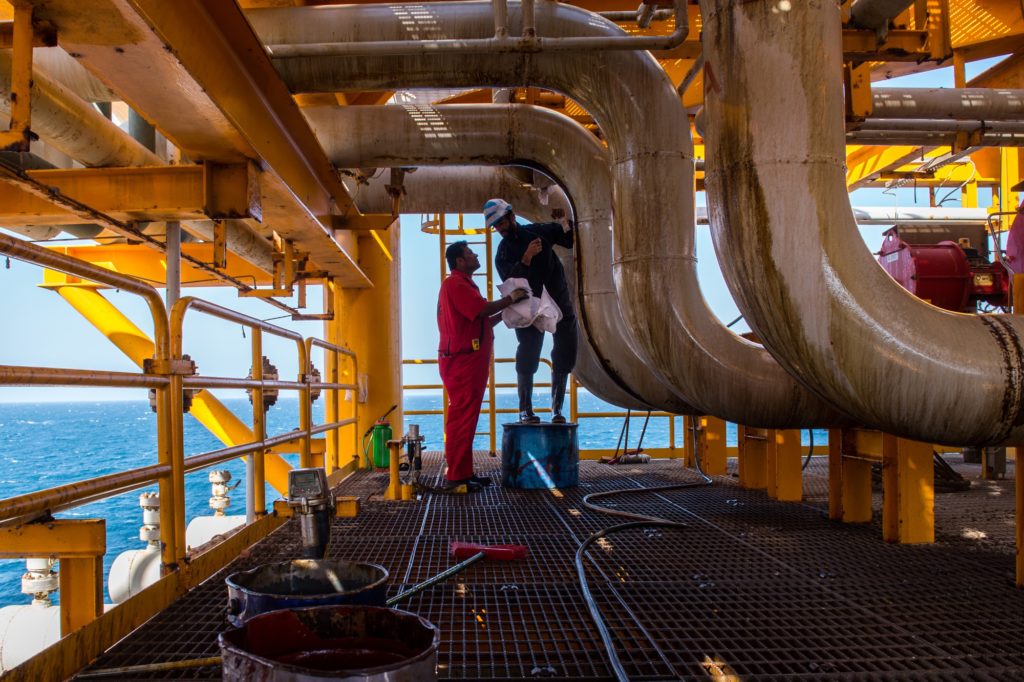
Oil headed for its first annual decline since 2015, slumping more than 20 percent in a turbulent year that saw fears of supply scarcity turn to expectations of a surplus.
Crude jumped 2.5 percent in New York on Friday, but prices remain on course for a 37 percent drop this quarter — the worst in four years. There’s growing concern that a trade dispute between the U.S. and China, along with tighter Federal Reserve monetary policy, will weaken global fuel demand. With American shale output booming, world oil markets could face excess supply next year, even though OPEC and its allies have pledged to rein in production.
Oil’s moves have been amplified by gyrations in equity markets, which have propelled a crude price volatility gauge to more than double over the past three months. China, the world’s second-biggest oil consumer, is heading into the new year with activity at his factories contracting again, a manufacturing indicator showed on Monday.
“We are most likely past the peak of this long economic uptrend,” said analysts at JBC Energy GmbH in Vienna.
West Texas Intermediate for February rose $1.01 to $46.34 a barrel on the New York Mercantile Exchange at 7:33 a.m. local time. Prices are on track for a 23 percent decline this year after climbing about 60 percent in the previous two years. Total volume traded Monday was about 24 percent below the 100-day average.
Brent for March settlement added $1.39 to $54.60 a barrel on the London-based ICE Futures Europe exchange. The February contract expired Friday after closing 4 cents higher at $52.20. The global benchmark crude has lost about 34 percent this quarter, and is headed for a 18 percent annual drop. It’s trading at a premium of $7.97 to March WTI.
Crude jumped to a four-year high in early October on concern that renewed U.S. sanctions on Iran’s oil exports would tighten supply. But the surprise decision by President Donald Trump’s administration to grant waivers to many buyers pushed prices into a bear market within weeks.
“Trump has reigned as the ultimate controller of oil prices this year because everything from sanctions against Iran, the trade war with China and even tensions with Saudi Arabia, he’s been involved,” said Sungchil Will Yun, a commodities analyst at HI Investment & Futures Corp. “While prices won’t fall further from here, the pace of increase will also be quite gradual next year.”
Output Cut
OPEC and its partners including Russia responded to the downturn earlier this month with a promise to cut 1.2 million barrels a day of output starting January. Estimates from consultants JBC Energy on Monday showed they’ve already started to make good on that pledge as Saudi Arabia takes the lead in restricting production.
But OPEC faces a formidable challenge from American drillers, which are pumping at record levels.
More than 100 additional oil rigs have been deployed across the U.S. this year, with overall crude production topping 11 million barrels a day. Oil stockpiles at the key U.S. storage hub in Cushing, Oklahoma, have surged to the highest level since January, while nationwide inventories are near a one-year high, according to Energy Information Administration data.
Other oil-market news Hedge funds are keeping their cool in the most tumultuous end of the year for oil since the 2008 financial crisis, betting on better days ahead. While the U.S. continues to add oil and natural gas drilling rigs despite the recent swoon in crude prices, Canada’s count in the past two weeks has dropped from 174 to just 70, the lowest since June 2016.
Recommended for you
